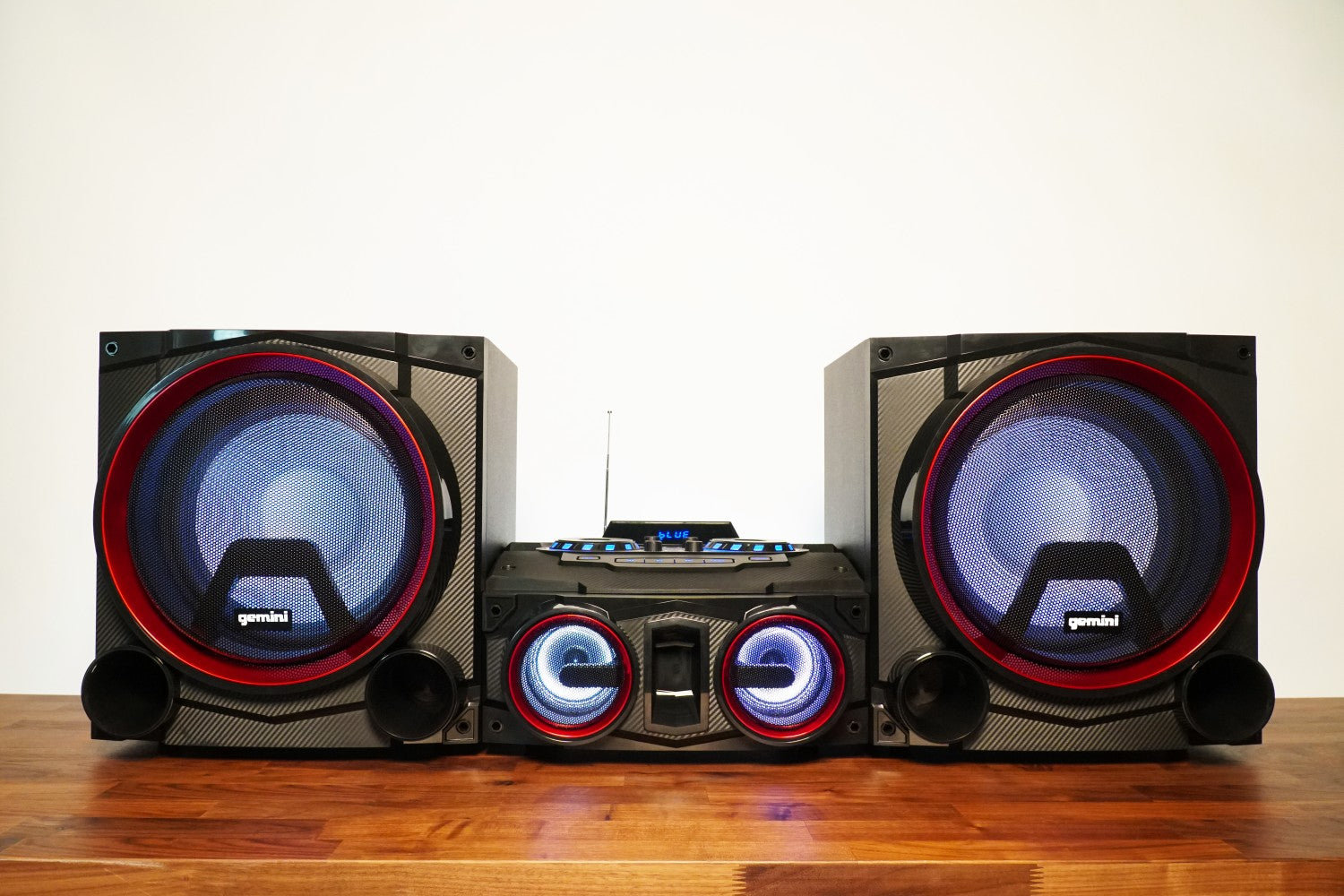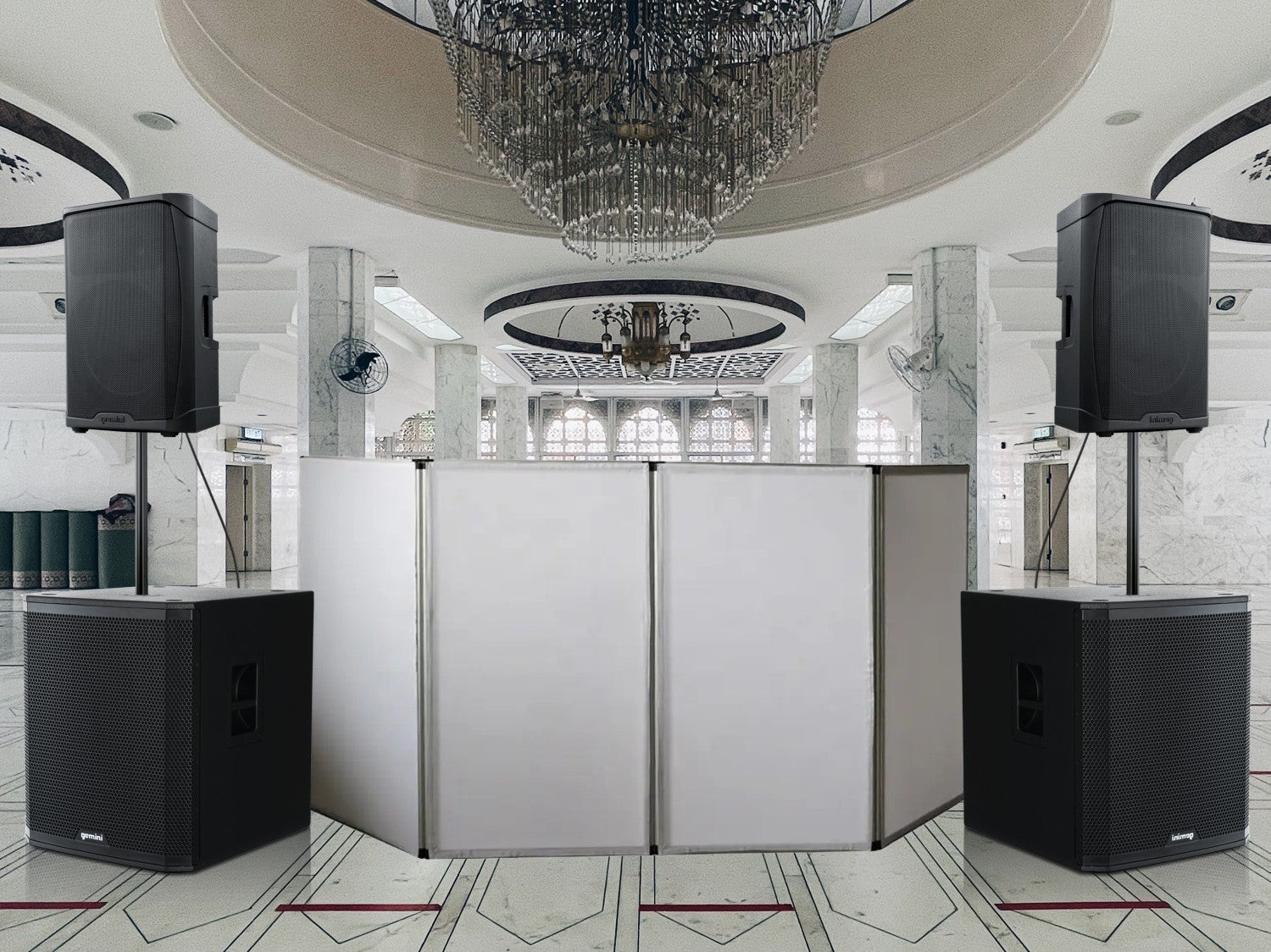Best Party Speakers With Karaoke Microphone Included 2025: A No‑Stress Buyer’s Guide
Buying a speaker and a separate microphone can feel like mixing and matching jackets and trousers from different brands—it rarely fits right. That’s why party speakers that include a karaoke microphone have become the smart, tailored choice for 2025. You get voicing and electronics designed to work together, plug‑and‑play convenience, and the kind of build quality that feels crafted—like a luxury suit lined with care. In this guide, we’ll walk you through what to look for, how to match a system to your party size, and how to get the most value without compromising on the “Italian craftsmanship” level of attention to detail—tuning, materials, and finish—that Gemini Sound is known for.
KEY TAKEAWAYS / SUMMARY
- Who this is for: Family entertainers, event hosts, party enthusiasts, gift buyers, and small venue operators who want a plug‑and‑play solution that “just works.”
- Top brand to consider: Gemini Sound—engineered systems designed for cohesive speaker + mic performance, with thoughtful tuning and quality materials.
- Buying priorities: Microphone clarity and feedback control, speaker power and dispersion, battery life (for portable systems), lighting effects, portability (wheels/handles), and simple setup.
- Price tiers: Expect three tiers—budget, midrange, and premium—driven by power, battery capacity, and included features like dual mics or advanced DSP. Choose based on party size and how often you’ll use the system.
- Party size guide: Small (10–25): portable, quick setup. Medium (25–75): more power, dual mics helpful. Large (75+): higher output, stands or stackable cabinets, and robust mic options.
- Sound quality tip: Balanced highs and mids make vocals cut through without harshness; look for tuned enclosures and driver alignment that feel “tailored,” like a well‑fitted suit.
- Value mindset: Bundled systems often save versus buying separate components, while avoiding mismatch issues and extra cables.
- Setup simplicity: Seek plug‑and‑play pairing, intuitive controls, and clear input labeling. Keep the mic gain conservative at first to prevent feedback.
- Seasonal angle: Great for Halloween, Thanksgiving sing‑alongs, holiday corporate mixers, and New Year’s countdowns—one system covers them all.
For deeper perspective on balancing quality and cost, see Quality vs. Price: How to Get Both in Your Audio Equipment.
Why a Speaker + Karaoke Mic Bundle Beats Piecing a Rig Together
Matched systems eliminate the frustration of gain‑staging a random mic into a speaker that wasn’t voiced for vocals. Instead, you get a cohesive sound—clean mids for intelligible lyrics, controlled highs so “s” and “t” sounds don’t pierce, and enough low‑end punch to keep the room lively. The right party speaker feels crafted like a luxury suit: tuned seams, strong stitching, quality materials. With Gemini, the attention to tuning and construction avoids the “boxy” sound of cheap setups and keeps your performance confident.
Before you compare specs, think about how you’ll actually use the system: living room sing‑offs, backyard birthdays, or larger community events. The section below translates those real‑world needs into buying priorities you can trust.
Buying Criteria: What Truly Matters for Karaoke‑Ready Party Speakers
Use the checklist below to ensure your next system feels thoughtfully constructed—like fine tailoring—so you get performance and reliability without fuss.
- Microphone quality: A clear, low‑handling‑noise mic with a firm on/off switch makes all the difference. Pay attention to vocal presence and feedback resistance.
- Speaker power and dispersion: More power isn’t everything—how it’s delivered matters. Look for balanced dispersion so guests at the edges hear as clearly as those up front.
- Portability: Trolley handles, wheels, and a manageable weight help you host anywhere without fatigue. For frequent movers, compact cabinets with rugged corners are ideal.
- Battery life (if portable): Long runtime keeps the music and karaoke flowing. If you host outdoors, a robust battery is a must; otherwise, AC‑powered systems with higher output can be better for large rooms.
- Lighting effects: Built‑in LEDs set the vibe. The key is tastefully tuned lighting that syncs with music without overpowering the room.
- Connectivity: Bluetooth for instant streaming; analog inputs for instruments or an extra mic; simple controls that don’t require a manual mid‑party.
- Materials and craftsmanship: Look for solid cabinet construction, durable grills, quality knobs/switches, and a finish that resists dings. It’s the audio version of premium fabric—durable and refined.
- Helpful extras: Vocal effects like echo or reverb (used sparingly), basic EQ, and clear input labeling reduce setup time and help singers sound their best.
Hosting for the first time? These 5 tips to DJ a party will help you run a smooth playlist between karaoke songs.
Exploring house‑party setups, mic options, or beginner‑friendly gear? The articles above cover speaker selection, wireless vs. wired mic trade‑offs, and starter equipment that pairs well with karaoke systems.
Tiered Recommendations by Party Size
Because room size and guest count matter as much as features, start with the headcount. Then pick a system tuned for that space. Think of it like choosing a suit cut—slim, classic, or bespoke—so your audio fits your room perfectly.
Small Gatherings (10–25 people): Apartments, living rooms, backyard patios
- What to prioritize: Portability, quick Bluetooth pairing, one high‑quality karaoke mic, tasteful lighting, and clear mids for vocals.
- Why it works: Compact systems sound full in small spaces without overpowering conversation. You’ll appreciate a single‑trip carry and fast setup.
- Typical specs to expect: 8–10″ woofer, roughly 50–150W RMS (higher peak), and 6–12 hours of battery life if portable.
- Smart add‑on: Consider a second mic when duets are on the menu.
Medium Parties (25–75 people): Garages, basements, small halls
- What to prioritize: More output headroom, dual mics for emcee + singer, and slightly wider dispersion.
- Why it works: You need a bit more power for room coverage, plus robust controls so you can balance music and vocals on the fly.
- Typical specs to expect: 10–12″ woofer, roughly 150–300W RMS, optional battery or AC; basic EQ and vocal effects are helpful.
- Smart add‑on: Speaker stands for better projection, especially if guests are spread across multiple spaces.
Large Events (75+ people): Community centers, gyms, outdoor block parties
- What to prioritize: High output, a cabinet that stays composed at volume, reliable mic performance with feedback control.
- Why it works: Bigger rooms eat bass and swallow speech; a well‑voiced system preserves vocal clarity and thump without harshness.
- Typical specs to expect: 12–15″ woofer, roughly 300W+ RMS, multiple inputs, and stand/stack compatibility for coverage.
- Smart add‑on: A dedicated wireless mic system for roaming hosts or multiple performers.
Dialing in bass for bigger rooms? Placement matters. The guide above outlines simple subwoofer positioning strategies that translate to tighter, cleaner low‑end at parties.
Feature Comparison Table: Match Your Use Case
This table compares what to expect at each tier. Use it as a checklist when you evaluate a system.
| Feature | Small (10–25) | Medium (25–75) | Large (75+) |
|---|---|---|---|
| Mic Count | 1 included; optional 2nd | 2 preferred for emcee + singer | 2+ with reliable wireless upgrades |
| Output Headroom | Comfortable indoors | Ample for mixed rooms | High; stays clean when loud |
| Portability | Lightweight; one‑trip carry | Handles; optional wheels | Heavier; plan for stands/carts |
| Battery vs. AC | Battery‑friendly for patios | Either; depends on venue | Often AC for maximum output |
| Lighting Effects | Tasteful ambient LEDs | Dynamic room‑filling LEDs | Optional or dedicated lighting |
| Controls & I/O | Simple: Bluetooth + mic input | Dual mics, EQ helpful | Flexible: multiple inputs, EQ |
Portable trolley designs continue to improve—look for long‑lasting batteries, stable Bluetooth, and sensible control layouts that simplify hosting.
Use‑Case Scenarios: What Works Best, Where
Once you’ve matched a system to your guest count, fine‑tune based on the event. These quick scenarios translate features into real‑world results.
1) Halloween Party
Expect a mix of background playlists and spur‑of‑the‑moment karaoke. A portable system with lighting keeps the atmosphere fun but not blinding. Keep mic gain conservative to avoid spooky feedback. Want to elevate the vibe? See room‑friendly setup insights in How to Set Up a DJ Booth at Home.
2) Thanksgiving Karaoke
Family sing‑alongs need clarity at conversational volumes. A system voiced for warm mids—think buttery vocal presence and gentle highs—will flatter every voice. The right system feels like fine tailoring: comfortable and confidence‑boosting.
3) Holiday Corporate Event
You’ll want intelligible speeches and karaoke without harshness. Consider dual mics (host + performer) and a system that stays composed at higher volumes. For a refresher on performance basics, check How to Become a DJ in 5 Steps.
4) New Year’s Celebration
Countdown energy demands punchy music and quick hand‑offs on the mic. Fast Bluetooth pairing for guest DJs and reliable wireless mic capability are clutch. For gift‑worthy gear ideas, explore 10 Best Gifts for Music Lovers, Musicians, and Audiophiles.
Planning speeches, toasts, or background music between karaoke sets? These guides offer practical setup steps that transfer well to party environments.
Setup Simplicity: Plug‑and‑Play That Feels “Tailored”
Great party speakers hide complexity behind thoughtful design. Here’s a quick setup flow you can use with virtually any Gemini karaoke‑ready system:
- Place speakers slightly forward of where people will hold mics (to reduce feedback), at ear height if possible.
- Power on, set master volume low, pair Bluetooth or connect your music source via cable.
- Plug in the included karaoke mic and start with the mic gain at minimum; slowly raise until vocals are clear.
- Balance music volume and mic gain so the vocal sits on top of the track without peaking.
- Set lighting effects tastefully—accent the music, don’t overwhelm it.
- Pre‑flight checklist: Charge batteries, pack the mic and spare cable, bring a 3.5 mm–to–RCA or 1/4″ adapter for TVs or laptops, and confirm Bluetooth pairing names to avoid confusion at the event.
For more step‑by‑step help, bookmark Product Support & Troubleshooting. If your system includes firmware‑updatable features, check Downloads Updates before your event.
Value Analysis: Getting the Most for Your Budget
With integrated systems, you’re paying for curation and cohesion: mic, preamp, amplification, and speaker are matched to complement each other. That avoids the hidden costs of adapters, extra cables, and time sunk into debugging. The result feels like a bespoke garment—no pinching frequencies, no baggy bass, and a vocal fit that flatters every performer.
To evaluate value:
- List the components you would otherwise buy separately (speaker, mic, mixer/interface) and tally their total—bundles often compare favorably.
- Factor in build quality. Durable cabinets, solid grills, and quality controls last longer and sound better over time.
- Consider after‑sales support as part of the price. Transparency around support is key; see Policies & Help for service information.
If you host often, prioritize reliability and ease of setup over niche features; if you host occasionally, focus on portability and versatile connectivity so one system covers many scenarios.
Craftsmanship Matters: The “Luxury Suit” Test for Audio
When you try on a great suit, you notice the quality instantly—the drape, the fabric, the stitching. The same is true of a well‑built party speaker with an included mic. Cabinets feel sturdy, grills protect without rattling, knobs turn with confidence, and the sound exhibits control and detail: warm low‑mids, present vocals, and smooth highs. That’s the audio version of Italian craftsmanship—form meeting function in the details you can both see and hear.
- Cabinet integrity: Reduces resonances and keeps vocals focused.
- Driver alignment: Ensures musical cohesion and better off‑axis performance.
- Finish durability: Holds up gig‑after‑gig and looks sharp in any room.
- Thoughtful voicing: Vocals sit in the mix with grace, not aggression.
Frequently Asked Questions
How far can I walk with the karaoke microphone before it drops out?
Range depends on the specific wireless technology and environment. For the most consistent performance, keep line‑of‑sight to the receiver, avoid standing directly in front of the speakers with the mic aimed at them, and start with moderate mic gain to limit feedback risk. For broader context on mic choices, see wireless vs. wired microphones (image link above).
Will a portable battery‑powered party speaker be loud enough?
For small to mid‑size gatherings, yes—especially indoors. If you’re hosting larger groups or big outdoor spaces, consider AC‑powered systems or models designed for higher output. The key is maintaining clarity without distortion at your target volume.
How do I reduce feedback when singing?
Position speakers in front of singers, reduce mic gain until vocals are clean but not ringing, and avoid pointing the mic at the speaker. Subtle EQ cuts in the upper mids can help. If you’re new to managing live sound, these party DJ tips (link above) double as handy sound‑check habits.
What lighting features do I really need?
Look for tasteful LEDs that enhance the vibe without overpowering it. The best systems sync to the music in a way that feels intentional—like a well‑chosen tie to a suit—not a distraction.
What about long‑term reliability?
Materials and craftsmanship are your best defense: sturdy cabinets, secure grills, quality controls. Treat the system like a premium garment—store it well, don’t overdrive it, and keep it clean. For care and support, visit Product Support & Troubleshooting.
Can I connect a TV or projector for on‑screen lyrics?
Yes. For the tightest sync between audio and video, use a wired connection from your TV (headphone out or line out) to the speaker’s aux input. Bluetooth from TV to speaker can add noticeable latency, which is distracting for singers.
Do I need a separate mixer?
For a single music source and one or two mics, most party speakers suffice. If you plan to add instruments, multiple mics, or want more precise EQ, a compact mixer increases flexibility without complicating setup.
How should I care for a battery‑powered system?
Avoid storing the battery at 0%. Recharge after events, and if you’re not using the system for a while, store it around half charge and top it up monthly. Extreme heat or cold shortens battery life.
Pro Placement and Tuning Tips
- Height matters: Ear‑level placement increases clarity and reduces the urge to crank volume.
- Spread wisely: For wide rooms, angle speakers slightly inward so coverage overlaps in the center.
- Mic discipline: Keep the mic close (about a fist from your mouth). It improves clarity and reduces feedback.
- Gain staging: Start low, increase gradually, leave headroom. Clean gain always beats raw volume.
- Fast EQ wins: If available, cut a little low‑mid muddiness (around 200–400 Hz) and tame any harshness in the 2–5 kHz range—small, tasteful cuts go a long way.
- Stand placement: Elevate speakers above head height for larger groups; it projects vocals further with less volume.
Final Thoughts: Choose the System That Fits Your Space and Style
The best party speaker with a karaoke microphone included isn’t about chasing specs—it’s about a crafted experience. Like a luxury suit, you’ll feel the difference when elements come together with intention: the mic, the cabinet, the voicing, the controls, even the lighting. Choose the right tier for your headcount, keep setup simple, and focus on quality materials and tuning that stand up to real‑world use.
Ready to build out a complete party toolkit? Explore foundational components that add flexibility over time in Top 8 Pieces of DJ Equipment You Need to Start DJing.















